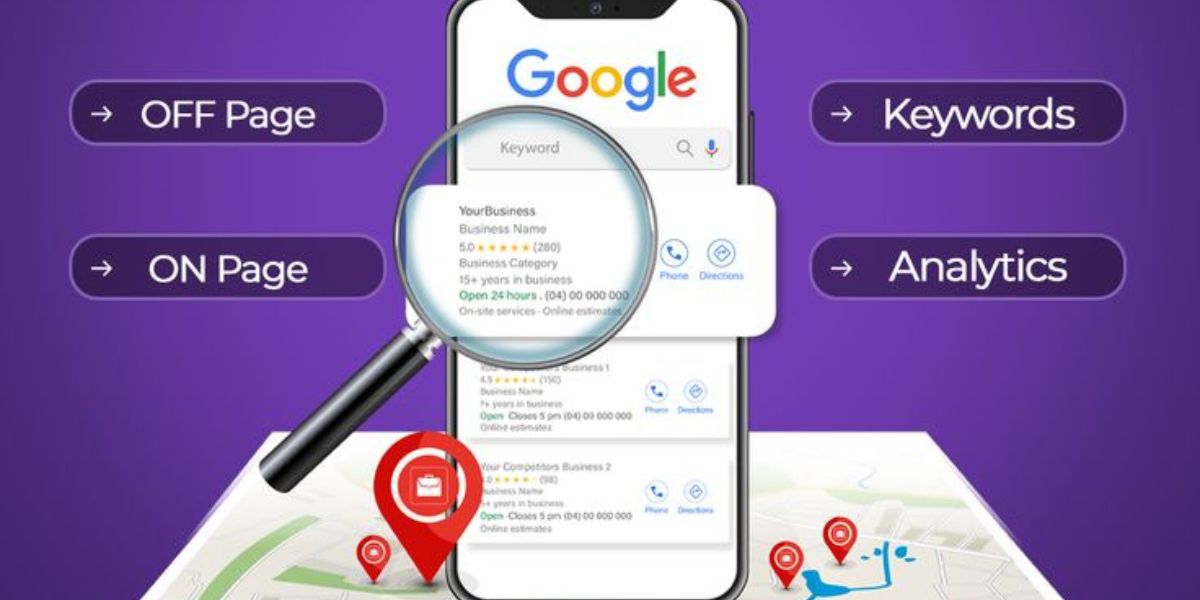Imagine waking up one day to see your website traffic has skyrocketed. More visitors, more engagement, and ultimately, more conversions. Sounds exciting, right? The truth is, increasing website traffic tenfold isn’t a dream—it’s achievable with the right SEO strategy. But where do you start? That’s exactly what we’ll explore in this article. By focusing on simple, effective SEO techniques, you’ll learn how to drive more organic traffic without resorting to complex technical tactics.
Understanding SEO Fundamentals
SEO, or Search Engine Optimization, is all about making your website more visible to search engines like Google. The better your SEO, the higher your site ranks—and the more traffic you get. But let’s be honest, SEO can seem overwhelming. Keywords, backlinks, algorithms—it feels like an endless puzzle. The good news? You don’t need to be an expert to see results. With a few strategic adjustments, you can significantly improve your website’s ranking and attract the right audience.
Conducting Keyword Research
Let’s talk about keywords. They’re the foundation of SEO. If people can’t find your content, they won’t visit your site. The key is to understand what your audience is searching for. Start by using tools like Google Keyword Planner, Ubersuggest, or SEMrush to find high-traffic, low-competition keywords. Instead of going for broad terms like “SEO strategies,” aim for more specific ones like “simple SEO strategy to boost website traffic.”
A personal example: When I first started optimizing my website, I targeted broad keywords that were too competitive. The result? My content barely made it to page three of Google. But when I switched to long-tail keywords with lower competition, my articles started ranking higher, bringing in more traffic with less effort.
On-Page SEO Best Practices
Now that you have your keywords, it’s time to optimize your content. But here’s the catch—stuffing keywords everywhere won’t help. Google is smarter than that. Instead, focus on placing them naturally in your:

- Title and meta description
- First 100 words of your content
- Headers (H1, H2, H3)
- URL structure
Beyond keywords, readability is key. Use short sentences, conversational language, and keep your paragraphs engaging. Think about it—would you rather read a dense, technical article or one that speaks directly to you?
The Power of Content Refresh
Here’s something most websites overlook: updating old content. Search engines love fresh, relevant information. If you have blog posts that are a year or two old, update them with new statistics, improved formatting, and additional insights.
A trick that worked for me: I had an old article about “SEO trends in 2022.” It was outdated, so I reworked it into “SEO trends in 2025,” adding recent Google updates and new strategies. The result? A massive spike in traffic as Google recognized the updated content.
What Are Content Clusters?
A content cluster is a group of interlinked articles that revolve around a central theme. Instead of writing multiple unrelated blog posts, you create a pillar page (a comprehensive guide on a broad topic) and then support it with cluster content (detailed articles focusing on specific subtopics). Each cluster article links back to the pillar page, forming a structured network that signals to Google:
- You are an expert on this topic.
- Your content is well-organized and comprehensive.
- Users can easily navigate and find all related information.
For example, let’s say your main topic is “SEO Strategies“. Instead of writing one long blog post that tries to cover everything, you can create:
- Pillar Page: “The Ultimate Guide to SEO Strategies in 2025”
- Cluster Articles:
- “How to Conduct Keyword Research for SEO”
- “On-Page SEO: Best Practices for High Rankings”
- “Technical SEO: A Beginner’s Guide”
- “Backlink Building Strategies That Work”
- “Content Optimization: How to Write SEO-Friendly Articles”
Each of these cluster articles links back to the pillar page, reinforcing its authority in Google’s eyes.
User Experience & Core Web Vitals
You might have the best content, but if your website is slow or difficult to navigate, visitors will leave. Google considers user experience a ranking factor, so focus on:

- Faster loading times are crucial for keeping visitors engaged. Studies show that users abandon sites that take more than a few seconds to load. To improve speed, use tools like PageSpeed Insights to analyze your site’s performance. Compress images, leverage browser caching, and minimize JavaScript where possible. I once optimized a sluggish website by simply reducing image sizes and enabling lazy loading, and the bounce rate dropped significantly while page views increased.
- Mobile responsiveness (Most traffic comes from mobile users!)
- Easy navigation (Is your site user-friendly?)
Think about your own browsing habits. Have you ever clicked on a website, waited too long for it to load, and then left? Exactly.
Backlink Strategies & Building Authority
Let’s talk about backlinks—the backbone of SEO. The more high-quality websites link to your content, the more search engines trust you. But how do you get these links?
Guest posting is one of the most effective ways to build authority and gain high-quality backlinks. By writing for industry blogs, you not only expose your expertise to a broader audience but also secure valuable links back to your site. For example, I once contributed a guest post to a well-known digital marketing blog, and within weeks, my website saw an increase in both traffic and domain authority. When pitching guest posts, focus on websites that align with your niche and provide valuable, well-researched content to increase your chances of getting published.
Broken link building is a powerful strategy for gaining backlinks and improving your website’s authority. This technique involves finding broken links on other websites and reaching out to the site owners to suggest replacing those dead links with your relevant content. For instance, I once discovered a high-traffic marketing blog with outdated links to a discontinued SEO guide. After crafting a well-researched and updated version, I contacted the blog owner, who gladly replaced the broken link with my resource. This not only boosted my site’s traffic but also strengthened my authority in the industry.
Creating shareable content is one of the most effective ways to attract natural backlinks and boost website traffic. When you produce valuable, visually appealing, or data-driven content, people are more likely to link back to it. For example, an in-depth guide on ‘SEO Trends for 2025’ featuring exclusive research and statistics is more likely to be cited by industry professionals. Similarly, an eye-catching infographic summarizing complex SEO concepts can go viral on social media platforms, drawing traffic from various sources. By consistently publishing high-quality, shareable content, you increase your chances of earning backlinks and expanding your reach organically.
A real-world example: A friend of mine wrote an in-depth guide on “SEO for small businesses.” It got picked up by several high-authority marketing blogs, skyrocketing his traffic overnight. Quality content gets shared—period.
SEO Analytics & Performance Tracking
You can’t improve what you don’t measure. That’s where analytics come in. Set up Google Analytics and Google Search Console to track your website traffic, keyword rankings, and visitor behavior.

A useful habit: Check your analytics weekly. Look at which pages perform best and which need improvement. Are people leaving quickly? Maybe your content isn’t engaging enough. Is one blog post getting tons of traffic? Double down on that topic.
SEO Beyond Google – Alternative Traffic Sources
Relying solely on Google is risky because search engine algorithms constantly evolve. Imagine waking up one day to find that an update has pushed your website down in rankings, cutting your traffic in half. This is why it’s crucial to diversify your traffic sources. Exploring alternative platforms like Pinterest, YouTube, and Quora can help mitigate this risk and sustain your website’s visibility. For example, a digital marketer I know built a substantial following on YouTube, and when Google rankings fluctuated, his video traffic kept his business thriving.
- Pinterest SEO: Optimize images and descriptions for searchability.
- Quora & Medium: Answer questions and link back to your website.
- YouTube SEO: Video content ranks high on Google—take advantage of it!
Fun fact: Some websites get more traffic from Pinterest than Google. It’s an untapped goldmine if used correctly.
Emerging SEO Trends – AI & Voice Search
The way people search is changing. More users are using voice search through Alexa, Siri, and Google Assistant. Optimizing for voice means using more conversational, question-based keywords. For example, instead of “SEO tips,” think “How can I improve my website’s SEO?”
AI is also revolutionizing SEO. Tools like ChatGPT, Jasper, and Google’s RankBrain are shaping search results. Learning how to leverage AI-driven content optimization can put you ahead of the competition.

Local SEO Strategies for Small Businesses
If you run a local business, SEO isn’t just about ranking worldwide—it’s about getting found in your area. Think about how often you search for businesses near you—whether it’s a coffee shop, a repair service, or a boutique. To ensure your business appears in local searches, start by claiming and optimizing your Google My Business profile. Use location-based keywords in your content, such as “best bakery in Brooklyn” or “top digital marketing agency in Austin.” Additionally, encourage satisfied customers to leave reviews, as positive feedback helps build credibility and improve rankings. Listing your business in online directories like Yelp, TripAdvisor, or local Chamber of Commerce websites can also drive more local traffic. I once helped a small bookstore implement these tactics, and within months, they saw a noticeable increase in foot traffic and online orders from nearby customers.
- Claiming and optimizing your Google My Business profile.
- Using local keywords like “best digital marketing agency in New York.”
- Getting listed in local directories.
I once helped a small café implement local SEO, and within months, they were ranking #1 for “best coffee shop near me.” It’s a game-changer.
Conclusion
Achieving 10X more website traffic isn’t about quick hacks or gimmicks—it’s about applying smart, consistent SEO strategies over time. By laying a strong foundation, refining your content, enhancing user experience, and closely monitoring your progress, you can unlock sustained growth. SEO is a marathon, not a sprint, but with patience and persistence, the results will be worth it. Imagine looking back in a few months and seeing your site thrive with organic visitors—it’s entirely possible with the right approach.
So, what’s your next step? Are you ready to implement these strategies and watch your traffic soar?


